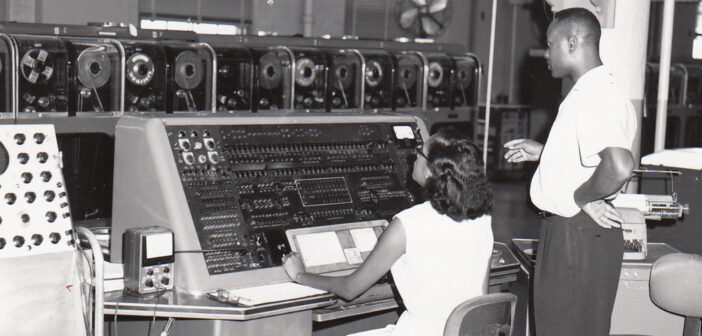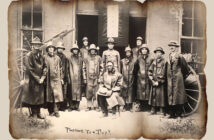During WW2, simple calculating/tabulating machines including the first computer facsimiles were used to catalog soldiers, people and munitions by the use of punch cards and other apparatus. After the war, the United States Army developed the ENIAC system and used it to calculate artillery firing tables and perform functions related to thermonuclear weaponry. Weighing nearly 30 tons, the unit utilized 18,000 vacuum tubes, numerous diodes, relays, resistors, etc. At a cost of $5 million of today’s money, it was too expensive and cumbersome to reproduce for personal or independent business applications.
Two ENIAC engineers, J. Presper Eckert and John Mauchly, recognized the machine’s real-world potential and set about making it available to any interested party. They reduced its total size, slashed its weight in half and decreased the number of components (they reduced the vacuum tubes to only 5,000) to something more reasonable and cost effective.
They also increased computing power (1,000 calculations per second) and memory (up to 1,000 words). After partnering with the Remington Rand Corporation, the two engineers brought the UNIVAC 1 to market as the first available computer system.
UNIVAC 1 (UNIVersal Automatic Computer) went into operation at the U.S. Bureau of the Census on June 14, 1951, ushering in the age of mass-produced computer equipment for consumers. Built as one of the first stored-program computers, it operated via keyboard and console typewriter for simple data input and a magnetic tape for all other input and output. UNIVAC 1 then changed society’s belief in the power of computers when it correctly predicted President Eisenhower’s landslide victory in 1953 – with only 5.5% of the vote returned – live on CBS News. Companies utilizing UNIVAC 1 included General Electric, New York University, U.S. Steel, DuPont, Westinghouse, Sylvania Electric and Metropolitan Life Insurance.
At the end of the 1950s, UNIVAC 1 was replaced by transistor computers, leading to integrated circuit machines and today’s microprocessor units.
The short-lived success of UNIVAC 1 opened the world to the potential of computer systems and helped lead to the availability and sophistication of today’s laptops, phones and desktop systems.








